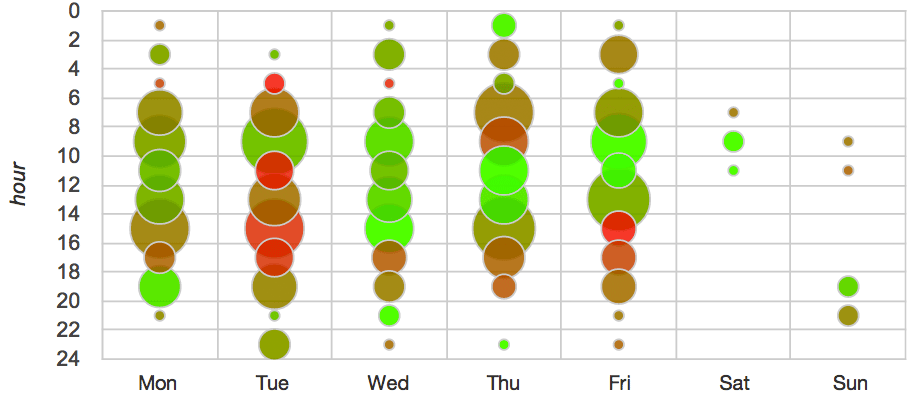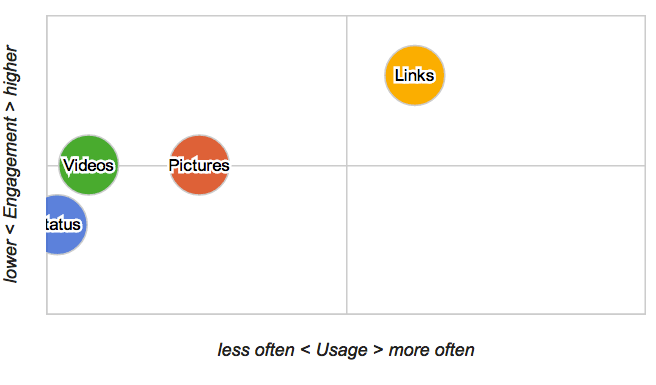When considering a bunch of options it is nice to know that you have someone to fall back on who will give you important insights and try his best to maximize your profits and success. That’s the reason most consulting agencies exist and it’s why we decided to look a little bit into their engagement on Facebook and Twitter.
Baby pictures or volatility rates
Accenture has the most fans. With 279k followers they lead the chart without much trouble, followed by PcW (211k), McKinsey (123k), The Boston Consulting Group (101k), Bain & Company (47k), Capgemini (41k), Roland Berger Strategy (7,6k) and McGladrey (7,4k). The pages grow by 0,7% weekly.
Service level and response time are bad, but that’s because almost no one uses the opportunity to post on the company’s wall. Without a question, there’s nothing to answer. Consulting is more of an in depth analysis than anything else so it seems logical that a Facebook post is rather pointless, especially compared on an appointment and a direct conversation.
Something that the agencies should definitely pay more attention to is the time they post at. With a couple of efficient optimizations they could increase their reach tremendously. Tuesday for example is like a swamp. If you decide to publish good content between 10am and 8pm it’s going end up as a failure.
Fewer people will see your post and even less bother to react to it. The easiest way to adjust this would be by delaying the content you prepared and post it between 8pm and 10pm. As usual: individual analysis required. Since we are looking at the average here, you need to check for yourself whether your page fits the profile or not.
0,5 posts is the amount of content the pages publish on a daily basis. Considering the fact that the topics often are high quality this is neglectable. It would certainly be better to increase the amount a tad, but especially considering how sophisticated some of the articles are we realize that this might be a bit much to ask for.
While browsing through the content published we noticed a few important things. One being the fact that the companies try to market themselves in completely different ways. A few examples of what we mean: While the Conseo Consulting Group and Jabian Consulting focus a lot on personal content that shows the people who work for the agency, their daily lives and even picture of newborns…
Censeo Consulting Group shared a picture 8/8/14
 4
4 0
0 0
0
Jabian Consulting shared a picture 8/1/14
 32
32 3
3 0
0
…other companies, such as L.E.K Consulting, Alix Partners or Pricewaterhouse Coopers take a more analytic approach. Most of their posts involve analyzing the impact of X on Y. Be that a declining currency, the role of the Indian economy or a comparison of health care systems and their respective cost from all over the world. Hinting at investment opportunities is a pretty common thing.
AlixPartners shared a link 8/6/14
 2
2 0
0 0
0
L.E.K. Consulting shared a link 7/31/14
 2
2 0
0 0
0
Looking at the post-types that are used only supports our impression. Most content is published as a link, redirecting the user to the companies website or blog. The goal is to provide as much helpful information as possible to convince people of your agency’s ability and competence. An approach that slightly differs from other companies, as we showed earlier.
More numbers, facts and good intentions
Twitter doesn’t really look that much different. The same companies that focus more on sharing knowledge than anything else do so here as well by tweeting informative graphics, graphs and analyses.
 Accenture has more followers than anyone else. With 175k they almost triple the amount of fans PwC (61k) and McKinsey (59k) have, followed by Bain&Company (47k) and Capgemini (44k). It’s pretty impressive that the Boston Consulting Group (1,4%) as well as McKinsey (1,2%) still have rather large weekly growth rates considering their big fan bases. The rest of the top 10 is mostly made up of profiles that don’t even reach a thousand followers such as Canseo CG (1,7%), Carkston Consulting (1,6%), Jabian Consulting (1,2%) or NERA Econ Consulting (1%).
Accenture has more followers than anyone else. With 175k they almost triple the amount of fans PwC (61k) and McKinsey (59k) have, followed by Bain&Company (47k) and Capgemini (44k). It’s pretty impressive that the Boston Consulting Group (1,4%) as well as McKinsey (1,2%) still have rather large weekly growth rates considering their big fan bases. The rest of the top 10 is mostly made up of profiles that don’t even reach a thousand followers such as Canseo CG (1,7%), Carkston Consulting (1,6%), Jabian Consulting (1,2%) or NERA Econ Consulting (1%).
Capgemini published the most content. Twenty-two tweets per day, followed by PwC (11), West Monroe Partners (10), Accenture and the Boston Consulting Group (7,7), McKinsey (5,7) and Oliver Wyman (5,5). Conversations are a rare sight and retweets don’t seem to be the most popular thing either.
Conclusion
The different approaches are really interesting to look at. Some agencies prefer Twitter over Facebook, others completely ignore one of the two. Meanwhile the posting styles differ between personal, professional and informative approaches. None of them work significantly worse.
All in all the pages deliver a decent performance, but still have a couple of improvements to make.
All calculations were made with Fanpage Karma. Fanpage Karma is an online tool used to analyze social media profiles. Users can monitor an unlimited number of Facebook pages, Twitter profiles or YouTube channels. Either their own or those of competitors. Fanpage Karma provides valuable insights on posting strategies and performance. It gives hints on how to improve engagement.
Would you like to know how you can optimize your social media strategy?
Article Header under CC BY-SA 2.0 license, unchanged, from epSos .de.









